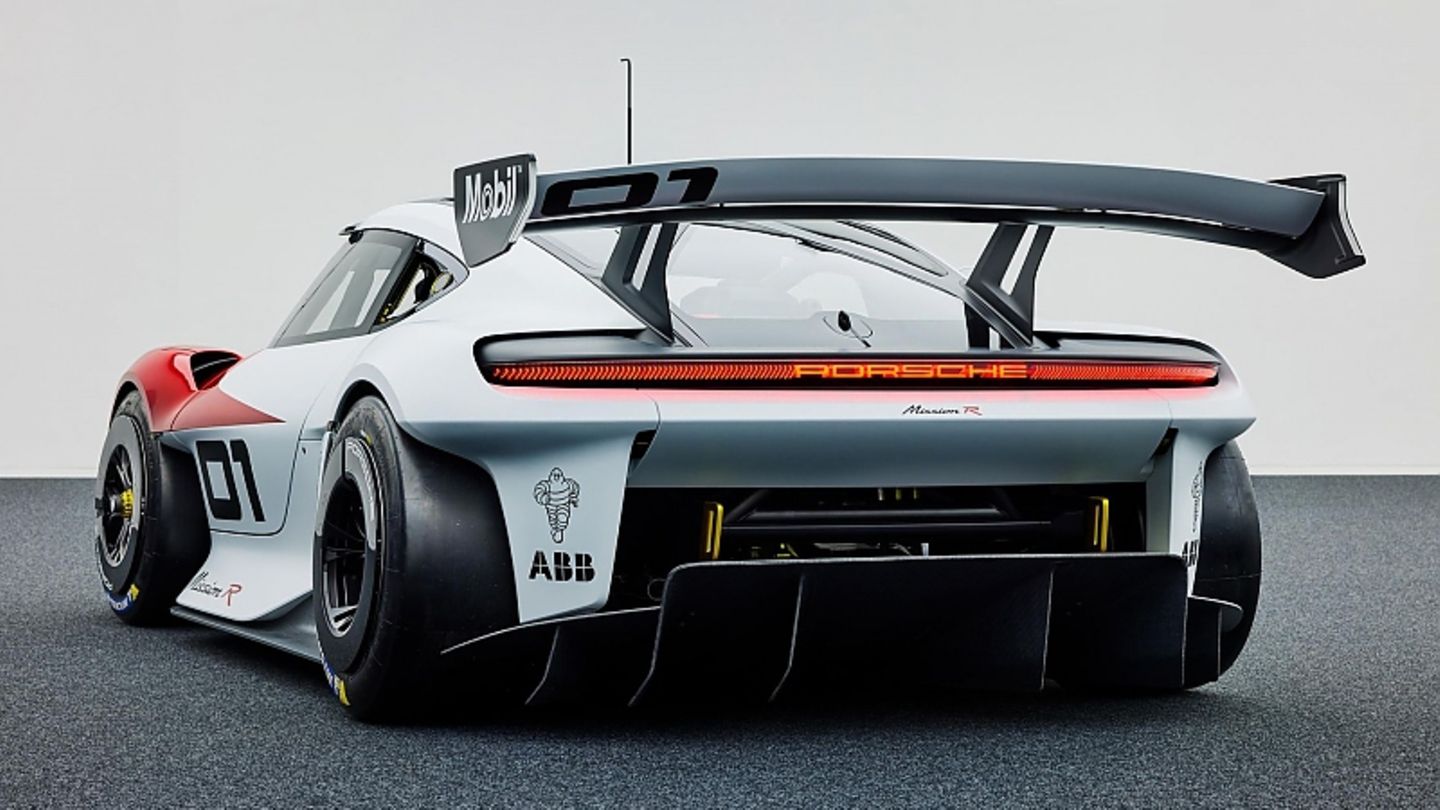Porsche is also committed to its roots in e-racing and, with the Mission R study, is showing a very realistic vision of what the customer racing of the electric future could look like. The concept vehicle also gives some interesting clues as to where the production vehicles are headed.
The verdict of the professionals after the first test drive with the Porsche Mission R was clear. “Neither Timo Bernhard nor Lars Kern missed the combustion engine”; says Matthias Scholz, overall project manager for GT racing vehicles at Porsche. And when you know that racing drivers are not always the best friends of an electric car (too heavy, too sluggish, too lame), this statement by the two Porsche works drivers is remarkable. Especially since the racer gives an outlook on GT racing of the future. In this case, that means 2026.
The study is not just a finger exercise for bored engineers, but the prospect of an e-brand cup. The general data of the Porsche Mission R are promising and already sound pretty real. All-wheel drive, a total output of 800 kW / 1,089 PS divided into 420 kW / 571 PS at the rear and 380 kW / 517 PS at the front with a weight of less than 1.5 tons. “We want to reach around 1,430 kilograms by the start of the racing series,” explains Matthias Scholz. There is also a battery with a capacity of 80 to 85 kilowatt hours. It is charged with 900 volts. This means that the batteries are 80 percent full in 15 minutes. The technicians are currently working on the cells with the aim of reducing the internal resistance of the cells. This should allow a test of strength over 30 to 40 minutes. So roughly exactly the length of a run of the current Porsche Supercup, which should continue to exist.
The Porsche Mission R is very real when it comes to racing technology. Because the GT bolide is balanced like a Japanese samurai sword. “Racing is about agility and not about setting the pace. The car should be fun,” explains Matthias Scholz. Recuperation is almost exclusively done with the front axle. However, not automatically as soon as you take your foot off the accelerator, as in a car, but only when the pilot steps into the irons. Since braking often and hard in a race, this concept makes perfect sense to extend the range. This also includes active aerodynamics with adjustable grille shutters and a variable rear spoiler. When developing the vehicle, designers and engineers worked hand in hand from the first pencil stroke. “That was a very fruitful collaboration. You take a lot with you for the series. We always had feasibility in mind,” says Peter Varga, who heads exterior design at the sports car manufacturer in Zuffenhausen and points out a small detail: “The Mission R is the first Porsche on which the brand lettering is three-dimensional. “
The engineers take a close look at every component so that the performance can be called up again and again over the racing distance. The battery and the two electric motors have an optimized direct oil cooling system. “We’re going one step further than the series,” explains Matthias Scholz. One might add “still”. Due to the improved cooling circuit, the wire winding of the electric machine can be made tighter. The power comes from special Michelin eco slicks made from renewable raw materials. The inside of the doors, the seat shell and some body parts are also made of natural fiber reinforced plastic (NFK).
The interior was developed in close cooperation with the racing drivers and also has some interesting solutions. Most noticeable is the carbon safety cage, which is part of the roof and is visible from the outside like an exo-skeleton. Another detail makes the eyes of the e-sports gaming community shine: The driver’s seat including pedals is designed as a module that can also be used as part of a racing simulator in your own four walls.
I am a 24-year-old writer and journalist who has been working in the news industry for the past two years. I write primarily about market news, so if you’re looking for insights into what’s going on in the stock market or economic indicators, you’ve come to the right place. I also dabble in writing articles on lifestyle trends and pop culture news.




